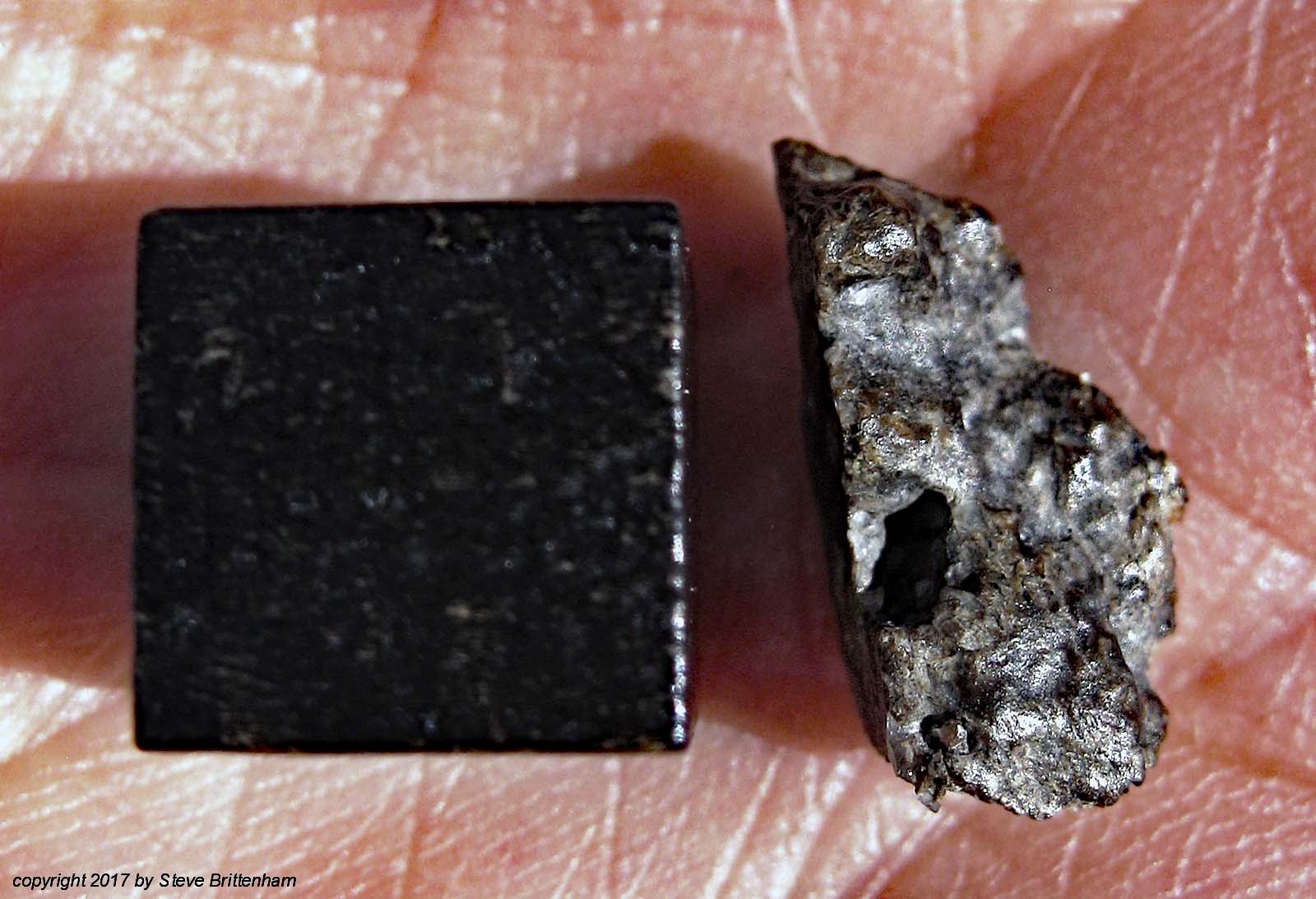|
Roll Overs:
#1
#2
#3
#4
|

|
|
Copyright (c) Steve Brittenham.
|
0.7 grams. 13 x 8 x 5 mm. Lunar (bas. breccia)
TKW 124 grams. Fall not observed. Found November 2000/December 2001 in Libya.
  
Steve writes:
Northeast Africa 003 was found in the Wadi Zamzam area of Northern Libya
about 125 miles south of the coast of Tripoli. A 6 gram stone was initially
recovered in November 2000, followed by a 118 gram stone in December 2001.
Approximately 75% of the larger stone is unbrecciated mare basalt and has
been given the designation NEA 003 (A), with the remainder being a basaltic
breccia designated NEA 003 (B). It is one of only two basaltic breccias,
the second being NWA 3160 (a three stone, 36 gram total weight meteorite
found in July 2005).
NEA 003 is also unofficially called Al Qaryah ash Sharqiyah and is a low
weathering grade meteorite with a crystallization age between 3.1 and 3.3
billion years, which is younger than the basalts studied as part of the
Apollo missions; however, NWA 003 (A)'s major element composition is
similar to Apollo 12's low-titanium olivine mare basalts and Apollo 15's
olivine-normative basalts. But while its parent melt was not contaminated
with KREEP elements like the Apollo samples, NWA 003 (A)'s glassy green
inclusions do suggest it might be derived from a mantle source similar to
the Apollo 15 samples' green glass.
Consequently NEA 003 (A) is thought to have crystallized deep inside a
younger magma flow within the Apollo 15 basalt suite. It appears to have
been subjected to an impact event approximately 1.8 billion years ago,
though its cosmic ray exposure age suggests it migrated to the upper
regolith approximately 209 million years ago, where it remained still buried
and shielded from solar wind particles until its final ejection event.
The piece shown here was obtained as part of a thin section and plug
collection I purchased from Edwin Thompson a few years ago. Among the 70
slides and 38 plugs was one small stone not already set in resin - NEA 003
(A). Edwin wavered on whether to commit this rare stone to thin sectioning,
but especially since it's not the rarer brecciated lithology, I've decided
to keep it intact. It's a very small piece (0.7 grams and 13 x 8 x 5 mm in
size) and my cameras don't have very good macros; I apologize for the
quality of the pictures, but I thought I'd go ahead and try to get some up
anyway.
Photos 1 and 2 give an idea of this fragment's size. To better convey its
features, I took photos under a couple of different lighting conditions;
Photo 3 shows three different angles, the left half taken under brighter but
more neutral lighting and the right half emphasizing the redder tones (the
upper two images show the same angle taken with both types of lighting to
illustrate the difference). But Photo 1 is probably truest to the
meteorite's actual colors. |
Click to view larger photos
#1
#2
#3
#4
|
Found at the arrow (green or red) on the map below
|
|
| |
John Divelbiss
6/11/2017 10:01:48 AM |
nice rare one Steve. I have a small piece of this one. |
Wilford Krantz
6/10/2017 6:22:01 PM |
That is some crazy looking stuff. Definitely not like other lunars I've seen on the MPOD. Thanks! |
| |
|